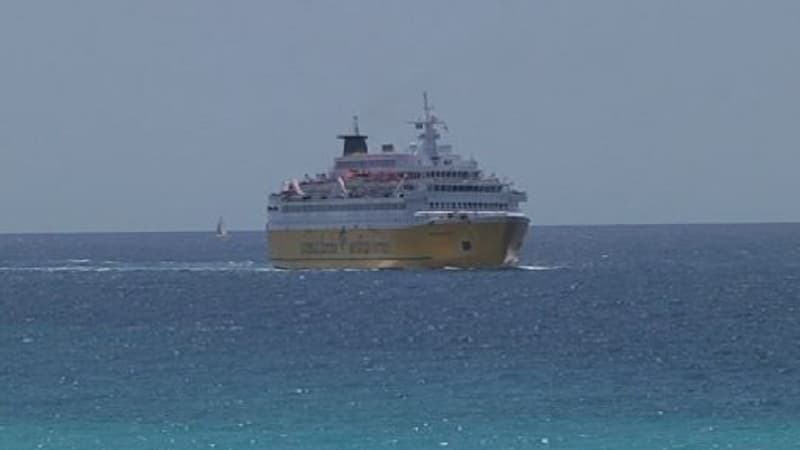Comfortable and equipped cabins, careful catering, space for entertainment or reserved for your pet, luxury lounge, spa and even a swimming pool… Traveling by ferry today has very little to do with what you might have experienced a few decades ago.
Although this type of transport continues to be appreciated to cross the English Channel or the Mediterranean, for example, quickly and cheaply, operators multiply destinations, modernize their fleets, offer different classes and services, and thus try to attract new customers, fans of slow ride and who wants an alternative to flying to reduce their carbon footprint. The trip more than the simple journey in short.
From France, it is possible to comfortably reach Sardinia from Nice or Toulon, or even further afield, the Balearic Islands. You can also go to Ireland from Brittany or Normandy or to Morocco from Sète or Marseille.
Tourism, a third of sales at Corsica Ferries
On P&O Ferries, along with the essential Dover-Calais, the company offers “mini-cruises” between Rotterdam in the Netherlands and Hull or York in England with two nights on board and services such as venues for shows on land.
“This is increasingly of interest to those who go to a poorly equipped tourist destination by public transport. They embark with their vehicles, it makes life easier for them, the trip is pleasant with catering on board and it is cheaper than renting a car on the spot”, he adds.
And specify that this “tourist” clientele already represents a third of the company’s sales with top destinations: the Balearic Islands and the Island of Elba in Corsica.
In reality, “speed is no longer the main argument” for ferries, underlines Pierre Mattei, “we hardly have any more old-style boats, the new ferries have many more cabins and allow us to offer more services on board, slowness is part of our success”. Also, the faster ships were gradually abandoned.
Speed is no longer an argument, price is
However, the leader believes that the main argument of the ferries continues to be (and will continue to be for a long time) the price. An observation shared by Jean-Marc Roué, CEO of Brittany Ferries (which offers fewer “exotic” destinations).
“The fact is that today, for us, the proportion of Europeans who go north in a tourism logic is quite low. Price remains the main reason for decision, the argument of choice. Few choose us to travel “, adds Jean-Marc Roué.
Especially since France is distinguished by very low prices for the ferry trip. According to a study by Vivanoda, France ranks 12th among the cheapest countries in Europe to travel by this means of transport. The average price index (to travel 100 kilometers) is 47 euros compared to 105 euros, for example, in the United Kingdom.
According to this study, the crossings to Morocco are, by far, the cheapest. Conversely, the connections with Italy, in particular the crossing from Bonifacio to Sardinia, and those with the United Kingdom are those with the highest price indices.
A carbon footprint difficult to calculate
Another factor that makes the ferry attractive: its carbon footprint, on a less significant role than the plane given the number of passengers transported.
According to the European Environment Agency, ferries emit almost three times less CO2 than planes: about 60 grams of CO2 per kilometer and per passenger, compared to 160 grams for planes. However, according to Greenpeace, ferries reject in particular ultrafine particles, dangerous to human health, both on board and near ports.
Together with BFM Business, Marc Cottignies, an engineer from the Transport and Mobility department of Ademe (Environment and Energy Management Agency), questions the figures from the European Environment Agency. Highlighting the myriad of variables in the equation — type of ship, number of people carried, goods and cars on board, distance traveled — he believes that “in order of magnitude, the ferry is equivalent to the plane” in terms of carbon emissions.
Marc Cottignies recalls that the ships are getting bigger and “there are not so many passengers compared to the surface area of the ship. In addition, they are not full all the time, there is an important seasonality”.
The more oriented the boat is to tourism, the more it emits
Above all, the more tourism-oriented the ship is, with cabins and equipment, the more it emits, underlines the independent benchmark calculator Bonpote.com.
Therefore, comparisons are very difficult. According to this calculator, a round trip for a passenger between Cherbourg and Dublin emits 422 kilos of CO2. By plane, with the calculator from the DGAC, for a Paris-Dublin-Paris trip, the total is 214 kilos.
Enough to defeat the ecological ambitions of tourist ferry users? Again, everything depends a lot on these variables.
The cleanest ships are still few
There is also the question of the route to get to the ferry. This is also why the government is going to experiment this summer with a combined train+ferry ticket to get to Ireland.
However, we must not forget the effort of shipping companies to decarbonise their fleets with new ships, the use of LNG (slightly cleaner than marine fuel oil) or electricity on dock, or even as a mode of propulsion, to comply with the new standards imposed. The fact is that these ships are still few in the fleets (2 out of 10, for example, in Brittany Ferries).
And Jean-Marc Roué, CEO of Brittany Ferries, concludes: “Will this translate into attendance figures? We don’t know.”
Source: BFM TV


